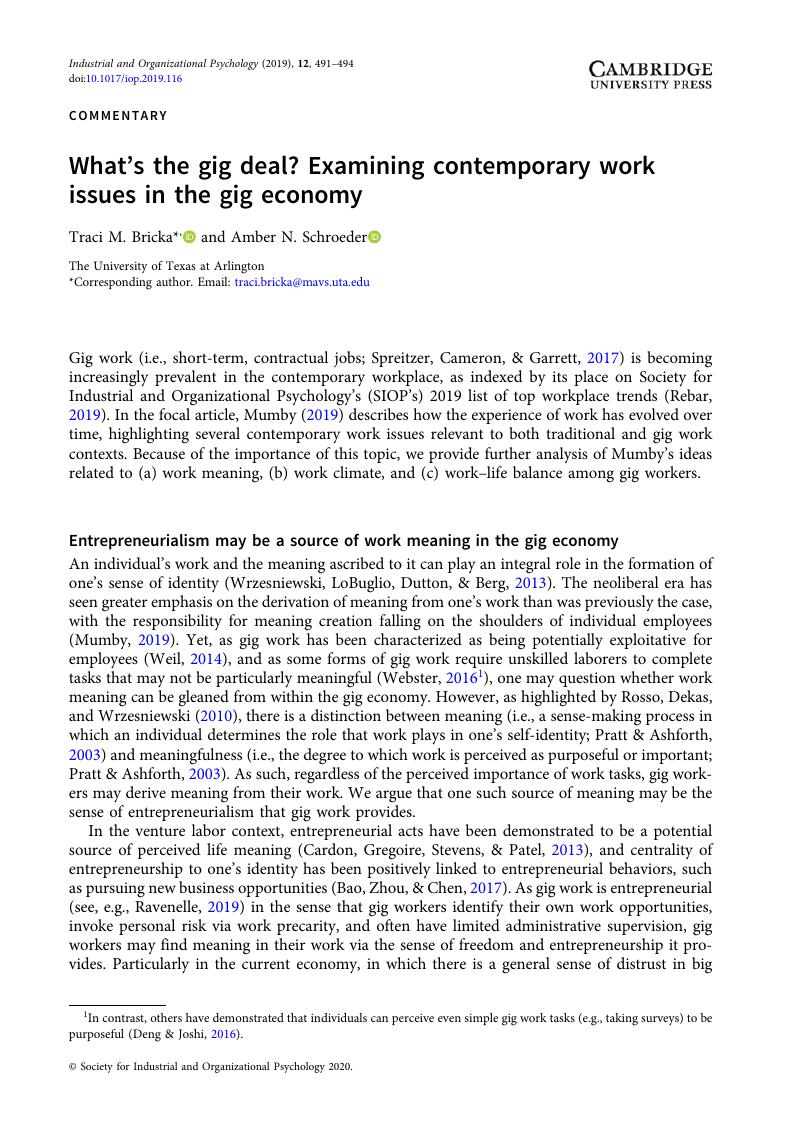Crossref Citations
This article has been cited by the following publications. This list is generated based on data provided by Crossref.
Connelly, Catherine E.
Fieseler, Christian
Černe, Matej
Giessner, Steffen R.
and
Wong, Sut I
2021.
Working in the digitized economy: HRM theory & practice.
Human Resource Management Review,
Vol. 31,
Issue. 1,
p.
100762.
Dey, Chitra
Ture, Rameshwar Shivadas
and
Ravi, Swarnalakshmi
2022.
Emerging World of Gig Economy: Promises and Challenges in the Indian Context.
NHRD Network Journal,
Vol. 15,
Issue. 1,
p.
71.
Cnossen, Boukje
and
Stephenson, Kathleen
2022.
Towards a spatial understanding of identity play: coworking spaces as playgrounds for identity.
Culture and Organization,
Vol. 28,
Issue. 5,
p.
448.
Coetzee, Melinde
Ferreira, Nadia
and
Potgieter, Ingrid L.
2023.
Pathways to meaningful work in the digital workspace: A qualitative exploration.
SA Journal of Industrial Psychology,
Vol. 49,
Issue. ,
Brawley Newlin, Alice
2024.
Methodological and Demographic Variation in Estimates of Economic Dependence Across Two Types of Gig Work.
Occupational Health Science,
Vol. 8,
Issue. 1,
p.
161.





